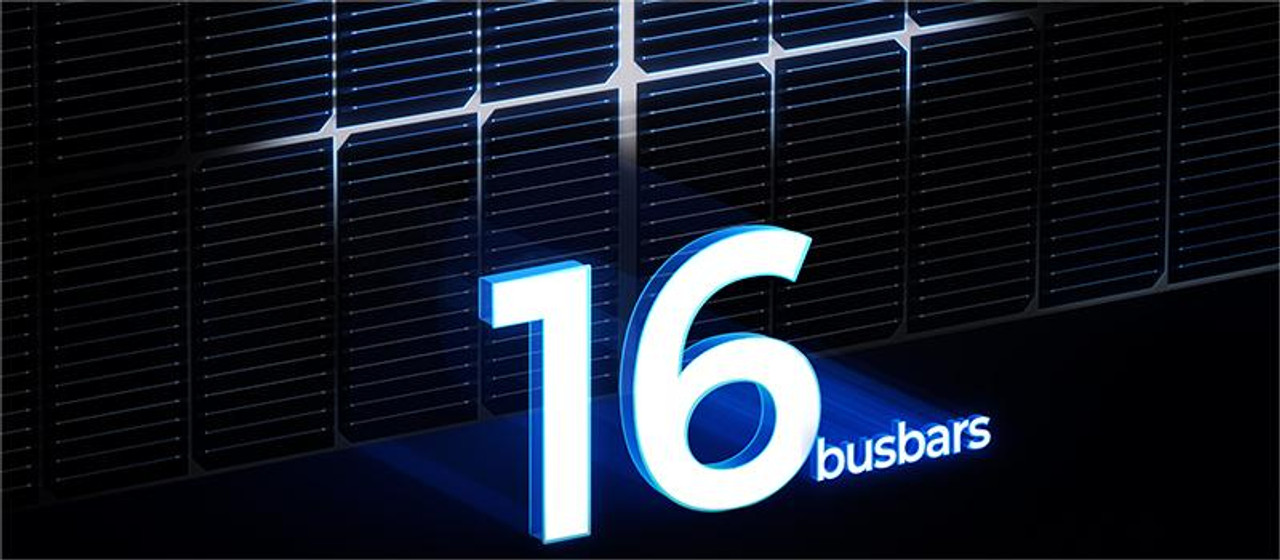What are N-Type TOPCon Solar Panels?
The quest for off-grid energy sources has led to significant advancements in technology, specifically in solar power. One such development has been the n-type solar panel. Made of n-type silicon, which has a surplus of electrons, these panels are known for their efficiency and longevity.
Are you in search of more efficient solar panels for your weekend camping trips or extended off-grid living in the midst of natural landscapes? In this article, we'll delve into n-type TOPCon solar panels and help you determine if they align with your needs.
What’s the Difference Between N-Type and P-Type Solar Panels?
When exploring the technical world of solar panels, one of the most fundamental distinctions between n-type and p-type is the type of silicon used in the cells. The “N” and “P” refer to the type of doping each kind of silicon undergoes, which ultimately affects the behavior of electrons within the solar cells.
P-Type Silicon
The most commonly used p-type silicon is “positively” doped, generally with boron, which leads to a deficiency of electrons. This creates “holes” or positive charge carriers. P-type silicon has been the industry standard due to its lower initial cost and simply manufacturing process. However, it has a significant drawback: it’s more susceptible to a phenomenon known as Boron-Oxygen Light Induced Degradation (BO-LID). Over time, exposure to sunlight can cause the electrical output of P-type panels to decrease, particularly during the first few months of operation.
N-Type Silicon
In contrast, N-type silicon is doped with phosphorus, adding extra electrons and creating a negative charge. This negative doping approach offers several key advantages:
- Reduced Light-Induced Degradation: N-type panels are less affected by light-induced degradation compared to p-type panels. This is because n-type silicon does not involve the boron-oxygen pairings that lead to BO-LID, ensuring that the panels maintain a higher level of performance over a longer period.
- Higher Efficiency: N-type silicon inherently has a higher carrier mobility, which means that electrons can move through the silicon more freely. This results in better electrical conductivity and, consequently, higher overall efficiency.
- Less Sensitive to Impurities: N-type silicon is less sensitive to impurities, which can further degrade performance in solar panels. This trait makes n-type panels particularly well-suited for harsh environments where reliability is critical.
What is TOPCon Technology?
TOPCon has become a common name in the solar industry. It stands for Tunnel Oxide Passivated Contact and involves a sophisticated design that reduces electrical losses and boosts efficiency. This technology reduces electron recombination significantly, which is a fancy way of saying it makes the panels more efficient and better at handling high temperatures.

What Factors Should You Consider When Selecting Solar Panels for Increased Power Output?
Choosing a high-efficiency solar panel requires considering multiple factors. Take these into account:
- Solar Cell Efficiency: TOPCon-equipped panels often outshine PERC panels in converting sunlight to electricity.
- Busbar Design: The choice between 16BB, 9BB, and 5BB impacts efficiency. Increased busbars typically result in enhanced performance and extended lifespan.
- Bifaciality Factor: It refers to the ratio of the back side's nominal efficiency to that of the front side on the solar panel.A higher bifaciality factor leads to increased overall energy yield. It's a crucial consideration when opting for bifacial panels.
- Performance in Various Weather Conditions: Always consider how your panels will perform under the environmental conditions they face.
Performing in Various Weather Conditions
One area to focus on is how well your solar panel will hold up against different weather. Here are some things to consider:
- High-Temperature Performance: TOPCon panels are the best for summer heat. They maintain higher efficiency when it’s needed most.
- Low Light Performance: Another area that they perform well in is when you’re in a low light situation. They will even work on early morning and cloudy days.
Lifespan: TOPCon vs PERC
Not only do TOPCon panels perform better, but they also last longer. Thanks to their robust construction and advanced technology, these panels are a wise investment for anyone thinking about the long term.
Why Choose Renogy N-Type TOPCon Solar Panel?
Higher Cell Efficiency: Renogy’s n-type panels boast a remarkable 25% cell efficiency. This leads to an extra 20W of power compared to conventional p-PERC panels of the same design,giving you more bang for your buck.
Innovative Busbar Design: The 16BB (16 busbars) design of these panels is a game-changer. More busbars mean less resistance and better flow of electricity, which not only enhances conversion efficiency but also contributes to the extended lifespan of the panels.
Superior Performance in Extreme Heat: The low temperature coefficient of -0.29%/C is a standout feature. It ensures stable performance of the panels, even as temperatures climb, making them ideal for hot climates.
Bifacial Technology: N-type bifacial panels, with an 80% bifaciality factor, can capture more sunlight from their back sides, resulting in up to 14% more power generation compared to p-PERC counterparts. This is especially advantageous in environments with reflective surroundings.
Universal Compatibility: Renogy’s n-type panels are compatible with 99% of charge controllers on the market, making them a versatile choice for either upgrading an existing system or installing a new one.
Enhanced durability: The aluminum frame which is over 1.1mm thick is built to withstand severe environmental conditions. From heavy snow to high winds, Renogy’s panels are built to last.
Closing Thoughts
Choosing Renogy N-Type TOPCon solar panels means investing in some of the most advanced technology available today. Whether you’re setting up a new solar array or upgrading your existing setup, Renogy 16BB N-Type 250 Watt Bifacial Solar Panel and Renogy 16BB N-Type 100 Watt Solar Panel offer superior performance, impressive durability and the peace of mind that comes with Renogy warranty. Check it out today!








